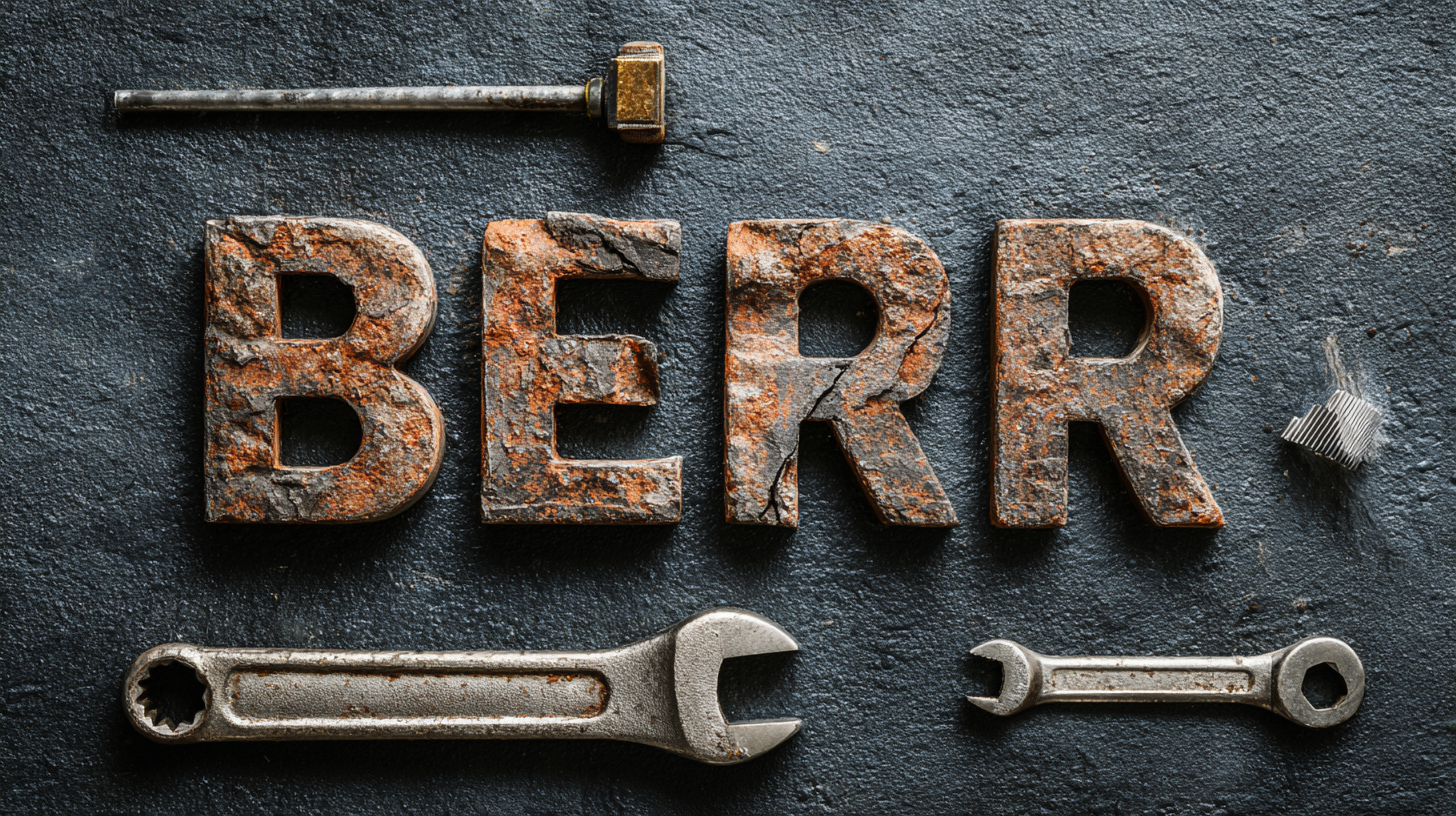
Maximizing After Sales Services and Repair Costs with 7 Expert Tips from Best Suppliers
In today's rapidly evolving marketplace, after-sales services have emerged as a crucial factor for consumer satisfaction and brand loyalty. According to a report by MarketsandMarkets, the global market for after-sales services is projected to reach $1 trillion by 2025, with suppliers playing a pivotal role in this growth. With increasing competition, suppliers must optimize their after-sales services and repair costs to enhance operational efficiency and improve customer experiences. This blog will delve into seven expert tips from the best suppliers in the industry, highlighting strategies that not only reduce costs but also increase customer satisfaction. As we explore these insights, we will emphasize the importance of reliability and quality, aligning with the ethos of "中国制造,全球共享,品质值得信赖" — a testament to the trusted partnerships between suppliers and consumers worldwide.

Understanding the Importance of After Sales Services in Manufacturing
 After sales services are crucial in the manufacturing sector, playing a significant role in customer satisfaction and retention. According to a study by McKinsey, companies that prioritize after sales support can see a 10-15% increase in customer loyalty, leading to a notable boost in repeat business. This loyalty not only translates into steady revenue flows but also reduces the costs associated with acquiring new customers. In today’s competitive market, delivering exceptional after sales service is no longer optional; it's a strategic necessity.
After sales services are crucial in the manufacturing sector, playing a significant role in customer satisfaction and retention. According to a study by McKinsey, companies that prioritize after sales support can see a 10-15% increase in customer loyalty, leading to a notable boost in repeat business. This loyalty not only translates into steady revenue flows but also reduces the costs associated with acquiring new customers. In today’s competitive market, delivering exceptional after sales service is no longer optional; it's a strategic necessity.
Moreover, effective after sales services can significantly influence repair costs. A report from Deloitte highlights that manufacturers that implement proactive maintenance and support systems can reduce their repair expenditures by up to 30%. By using data analytics, companies can predict potential product failures and address them before they escalate, thereby minimizing downtime and enhancing overall product performance. These strategies not only optimize repair costs but also reinforce a brand's reputation for reliability, fostering deeper connections with customers and paving the way for sustainable growth.
Key Factors to Consider When Choosing Quality Manufacturers
When choosing quality manufacturers for after-sales services and repair costs, several key factors come into play. The global machine vision market is anticipated to grow significantly, with projections indicating an increase from $11.61 billion in 2024 to $22.59 billion by 2032, reflecting a robust compound annual growth rate (CAGR) of 8.7%. This growth underscores the importance of partnering with reliable suppliers who can support the evolving technological demands of the industry. Quality manufacturers not only provide superior products but also ensure that their after-sales service can efficiently handle repairs, making them a vital part of a business’s supply chain.
Another industry to consider is the mint oil market, which is expected to expand from $527.5 million in 2025 to $994.1 million by 2032, achieving a CAGR of 9.4%. This growth indicates rising consumer interest and the need for suppliers who can maintain high-quality standards throughout the production and distribution processes. Therefore, the choice of manufacturers should focus not just on cost-effectiveness but also on their ability to deliver consistent quality and reliable service in order to maximize overall operational efficiency and customer satisfaction.
Maximizing After Sales Services and Repair Costs
This chart illustrates the average repair costs associated with various after sales services, helping businesses to evaluate quality manufacturers.
Top 7 Expert Tips for Optimizing Repair Costs Effectively
Maximizing after-sales services and repair costs is crucial for businesses looking to enhance customer satisfaction and optimize their operations. To achieve this, it’s essential to implement expert tips that can effectively lower repair costs while maintaining service quality.
Firstly, establishing a structured process for handling customer feedback can significantly improve service outcomes. Actively listening to customers not only addresses their immediate concerns but also sheds light on common issues that may require attention. This proactive approach can help identify patterns and streamline repair processes, saving both time and money.
Secondly, investing in training for your staff can yield high returns. Ensuring that your team is well-versed in the latest repair techniques and customer service practices can enhance efficiency and reduce the likelihood of errors, which can lead to costly repairs. Regular training sessions keep the team updated on industry advancements and improve their problem-solving skills, translating to quicker resolutions for customers.
Lastly, leveraging technology to automate scheduling and repair processes can lead to significant improvements. By using software solutions that track service requests and manage technician assignments, you can optimize workflows, minimize downtime, and ultimately reduce repair costs. This strategic use of technology not only enhances operational efficiency but also contributes to a better overall customer experience.
Building Strong Relationships with Suppliers for Better Service
Building strong relationships with suppliers is pivotal in maximizing after-sales services and managing repair costs effectively. According to a report by the Institute for Supply Management, companies that develop collaborative relationships with their suppliers can reduce operational costs by up to 20%. This collaboration fosters better communication, leading to quicker response times and improved service quality. By aligning goals and expectations with suppliers, businesses can ensure that repair processes are both efficient and cost-effective, reducing downtime and enhancing customer satisfaction.

Moreover, a study by Deloitte found that companies with strategic supplier partnerships are 50% more likely to exceed their corporate performance objectives. By cultivating trust and transparency, businesses can gain access to supplier expertise and innovations that might not be available otherwise. Regular dialogue and feedback loops create a proactive service environment, where issues are addressed before they escalate into costly repairs. Thus, investing time in supplier relationships not only aids in better after-sales services but also translates into significant long-term savings and enhanced service delivery.
Leveraging Digital Tools to Enhance After Sales Support
In today's fast-paced market, leveraging digital tools is essential for enhancing after-sales support. Platforms that visualize, model, and simulate complex systems allow Original Equipment Manufacturers (OEMs) to better manage after-sales services, ensuring that customer needs are met effectively. The integration of such technology not only streamlines processes but also facilitates real-time data analysis, enabling businesses to anticipate issues before they escalate.
Moreover, the rise of AI-driven customer service offers a plethora of opportunities for businesses to improve their engagement strategies. By employing generative AI, companies can create personalized experiences that resonate with customer preferences, ultimately leading to increased satisfaction. With the ability to analyze consumer behavior through big data, organizations can adapt their offerings and refine after-sales strategies, ensuring they remain competitive in a landscape marked by constant disruption. Embracing these digital tools is not just a trend; it is a necessary evolution for brands aiming to thrive in the modern marketplace.
Maximizing After Sales Services and Repair Costs with 7 Expert Tips from Best Suppliers - Leveraging Digital Tools to Enhance After Sales Support
| Tip | Description | Digital Tool | Expected Outcome |
|---|---|---|---|
| Utilize CRM Systems | Implement a Customer Relationship Management system to track customer interactions and needs. | Salesforce | Improved customer service and loyalty. |
| Leverage Chatbots | Use AI-driven chatbots for 24/7 customer support and inquiry handling. | Intercom | Reduced response time and increased customer satisfaction. |
| Implement Feedback Loops | Collect and analyze customer feedback to improve services. | SurveyMonkey | Enhanced service quality based on direct customer input. |
| Optimize Communication Platforms | Use unified communication tools for better internal collaboration. | Microsoft Teams | Streamlined operations and faster issue resolution. |
| Automate Service Reminders | Set automated reminders for service, maintenance, and follow-ups. | Zapier | Increased service engagement and retention. |
| Conduct Training Programs | Regularly train support staff to handle customer inquiries effectively. | Zoom | Enhanced staff competency and customer satisfaction. |
| Analyze Repair Costs | Track and evaluate repair costs to find opportunities for savings. | Tableau | Reduction in unnecessary repair expenses. |
